Gwinnett’s Historic Courthouse lawn is decked out for the holiday season with several decorations. Roving Photographer Frank Sharp used a pocket Canon Powershot L-100 to capture this scene of the west side of the courthouse. Activities are planned all during the holidays at this location.
IN THIS EDITIONTODAY’S FOCUS: The West Needs To Come Together With Islam To Destroy ISIS
EEB PERSPECTIVE: What Is The Oldest City in Metro Atlanta?
SPOTLIGHT: Heaven and Associates, P.C.
UPCOMING: Gwinnett Place CID Works To Expand Boundaries During 2017
NOTABLE: Gwinnett Tech Librarian Is A Winner of “Love My Librarian Award”
RECOMMENDED: The Whistler by John Grisham
GEORGIA TIDBIT: Savannah River’s Banks Steeped in History Going Back 12,000 Years
TODAY’S QUOTE: Wonder Why He Doesn’t Get Many Invitations To Parties?
MYSTERY PHOTO: Does This Architecture Tell You Anything about This Building?
LAGNIAPPE: Walton EMC Line Technicians Place in Lineman’s Rodeo in Kansas
CALENDAR: Model Railroad Exhibit Through Holidays at George Pearce Park
TODAY’S FOCUSThe West needs to come together with Islam to destroy ISIS
(Editor’s Note: Mr. Leaphart is an attorney from Jesup, Ga. He is a graduate of the Atlanta Law School, and was the attorney for Wayne County and its school board and also for the McIntosh County school board.—eeb)
By Alvin Leaphart, Jesup, Ga. | The moving forces in society are not lawyers. Lawyers simply work within the framework of society as it exists during a period in history, trying to make sense out of it, and maintain peace and harmony in society.
The moving forces, or the changers, are religious leaders, activists, and radicals in all groups. Religious leaders work to keep things as they are; activists seek change; and radicals use one or the other, or both, to destroy a society and create a new one in their own image.
This situation has been true throughout history. Christian radicals in the Middle Ages invaded Europe and destroyed the pagan societies bringing various brands of Christianity to the regions and created kingdoms, in their own images. Now we have Islamic radicals, ISIS, seeking to destroy the various societies in the Middle East, Islamic societies, and the Christian societies in Europe and the rest of the World.
This is not a religious movement. ISIS is a radical movement which is using Islam, the same as the Crusaders used in the 10th Century — a movement of the Europeans to conquer and ravage countries of the Middle East for their own selfish motives.
If all Moslems were a danger, and involved in this movement, why is ISIS attacking Syria and Iraq, as well as seeking inroads into Turkey?
When the Jews were conquered by the Babylonians, the Jews had no abstract idea of good and evil, no hierarchy of angels and devils, and no Messiah. When Cyrus the Persian, a Zoroastrian man, conquered Babylonia, he brought with him a concept of good and evil, a hierarchy of angels and devils. And the idea of a Messiah. Out of this came Zionism, and from that came Christianity and Islam.
We all worship the same God. We just call Him by a different name.
We don’t need to condemn Islam for the violence; there are insane, misguided, and vicious people in all religions. The West needs to come together with Islam as well as with all other religions and destroy a common enemy.
- Have a comment? Send to: elliott@brack.net
A look at when cities in Georgia were chartered
By Elliott Brack, editor and publisher | Officials in the county seat of Lawrenceville have been selling themselves short. Perhaps it’s because when new people come into office in Lawrenceville, and that the institutional memory went the door. For the Lawrenceville officials have been saying recently that they are the second oldest city in Metro Atlanta.
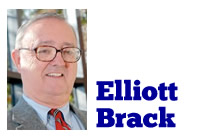 Tut. Tut. It’s better than that. Maybe city officials have not opened the history book, Gwinnett: A Little Above Atlanta recently, written by yours truly. For on page 110, it says: “Lawrenceville has the distinction of being the oldest city in the five county Metro Atlanta area, dating back to 1821.”
Tut. Tut. It’s better than that. Maybe city officials have not opened the history book, Gwinnett: A Little Above Atlanta recently, written by yours truly. For on page 110, it says: “Lawrenceville has the distinction of being the oldest city in the five county Metro Atlanta area, dating back to 1821.”
That led us to wonder about the date of chartering of other Metro Atlanta cities. Decatur is the second oldest in Metro Atlanta, dating back to 1823. Then comes Marietta (1834), Atlanta (1845) and Jonesboro (1859). We got the dates cities were chartered from Amy Henderson at the Georgia Municipal Association (GMA).
The years other cities of Greater Atlanta were chartered include Covington, 1822; Fayetteville, 1823; McDonough, 1823; Newnan, 1828; Canton, 1834; Cumming, 1834; Conyers, 1854; and Fairburn, 1854.
In 1818 the state created three counties, Gwinnett, Hall and Walton. The county seat cities of Gainesville and Monroe were also chartered in 1821.
THE GMA INFORMATION got us to wondering about other Georgia cities. So we propose a trivia question, which all of you might know to test others: what is the oldest chartered city in Georgia?
ANSWER: The oldest chartered city in Georgia is Washington, county seat of Wilkes County, got its charter in 1780. What? Yes, Savannah is next, chartered in 1789, and you wonder why the Savannahians, which was first settled in 1733, didn’t charter itself sooner. Third oldest chartered city St. Marys, chartered in 1792.
Now, more details. Skeet Willingham, the go-to person for local history in Washington, says that while Savannah was Georgia’s capitol in 1776, during the Revolution it was not a “patriot haven.” He adds: “When people in Savannah saw the Redcoats coming, they let the British in. So the capitol of Georgia was moved to Augusta in 1778.
“Then when Augusta fell to the Tories, the Georgia government moved in 1780 to the back country, to Heard’s Fort. That was the home of Stephen Heard, who was president of the executive council of Georgia. Heard’s Fort is eight miles from Washington. Once the Tories left Augusta, the government moved back first to Augusta, then even met some in Savannah. But in 1798 Louisville was designated as the capitol, moving westward with the people. Eventually, in 1807 Milledgeville became the capitol, before it was finally moved to Atlanta in 1868.” Whew! Thanks, Skeet for that short history of Georgia capitols!
Meanwhile, Luciana Spracher, the archivist in Savannah, says that after settlement in 1733, Savannah government was British-run, of course. After the Revolution, the area was first run as a county government. But in 1787, the first city government was known as the Board of Wardens. Savannah got its charter as a city in 1789. Thus, Washington has the distinction as the first city chartered by the State of Georgia.
One more tidbit: Augusta was settled two years after Savannah, 1735. It did not get a charter as a city government until 1798. But recently the Richmond County and Augusta city government consolidated, so today its charter is from 1996.
- To see the charter dates of all cities in Georgia, click here.
- Have a comment? Send to: elliott@brack.net
Heaven and Associates, P.C.
 The public spiritedness of our sponsors allows us to bring GwinnettForum.com to you at no cost to readers. Heaven & Associates, P.C., is a certified public accounting firm. They provide solutions for success. They are located at 4720 Peachtree Industrial Boulevard, Suite 201, Norcross, Georgia. They work with clients to minimize their tax obligations, address the financial and accounting needs of their businesses and address the broader accounting needs of estate planning, business succession planning, and benefit and retirement planning. They can be reached at 770-849-0078.
The public spiritedness of our sponsors allows us to bring GwinnettForum.com to you at no cost to readers. Heaven & Associates, P.C., is a certified public accounting firm. They provide solutions for success. They are located at 4720 Peachtree Industrial Boulevard, Suite 201, Norcross, Georgia. They work with clients to minimize their tax obligations, address the financial and accounting needs of their businesses and address the broader accounting needs of estate planning, business succession planning, and benefit and retirement planning. They can be reached at 770-849-0078.
- The web site is www.heavencpa.com.
- For a list of other sponsors of this forum, go to: https://www.gwinnettforum.com/about/sponsors.htm.
Send us your thoughts: We encourage you to send us your letters and thoughts on issues raised in GwinnettForum. Please limit comments to 300 words. We reserve the right to edit for clarity and length. Send feedback and letters to: elliott@brack.net
UPCOMINGGwinnett Place CID works to expand boundaries during 2017
The Gwinnett Place Community Improvement District (GPCID), a self-taxing district that uses additional property taxes to accelerate infrastructure improvements, security enhancements and economic developments in the Gwinnett Place area, is planning a 2017 district boundary expansion.
 The goal of the boundary expansion campaign is to enhance the ability of GPCID to fund extra improvement projects and engage more property owners to participate in the overall redevelopment efforts of the greater Gwinnett Place area.
The goal of the boundary expansion campaign is to enhance the ability of GPCID to fund extra improvement projects and engage more property owners to participate in the overall redevelopment efforts of the greater Gwinnett Place area.
The additional revenue from this year’s expansion could create new projects. They might include, intersection improvements, additional placement of streetlights throughout the area, transit improvements and further pedestrian enhancements.
While the GPCID creates new projects, studies and plans for 2017, it will also continue to provide daily security patrols in the district, continue to clean-up and beautify the area, and provide tax increment financing for redevelopment projects. This will mark the fifth year of expanding the district.
SCORE experts offer business start-up basics on Dec. 8
Are you interested in starting a business? Get the help you need with SCORE experts. This “Start-up Basics” class will focus on the concept of testing your business idea, identifying the key factors that influence start-up success, and provide you with an overview of the skills and tools you need when deciding to start a business.
Gwinnett County Public Library, in partnership with SCORE, is offering this free class on Simple Steps: Start-up Basics at our Suwanee Branch, 361 Main St, Suwanee, on December 8 at 6 p.m. For more information, please visit www.gwinnettpl.org or call 770-978-5154.
Duluth asks for participation in Citizens’ Budget Review Committee
 The City of Duluth will begin its sixth collaboration with the Citizen’s Budget Review Advisory Committee on March 8, for the FY2018 budget. Past Citizen’s Budget Review Advisory Committees reflected a great cross section of the citizenry and provided helpful feedback and recommendations. Meetings will take place in the City Hall Community Room between 6 and 8 p.m..
The City of Duluth will begin its sixth collaboration with the Citizen’s Budget Review Advisory Committee on March 8, for the FY2018 budget. Past Citizen’s Budget Review Advisory Committees reflected a great cross section of the citizenry and provided helpful feedback and recommendations. Meetings will take place in the City Hall Community Room between 6 and 8 p.m..
The first (March 8) meeting establishes an overview of the City’s budget process and what the Budget Committee’s role will be in the process. All Budget Committee participants will be given the City’s current operating budget (FY2017) and ten (10) year forecast presentation. They are asked to study the material and be ready to discuss them at the next meeting. Other meetings will follow on March 15, 22 and 29.
The recommendations of the Citizen’s Budget Review Advisory Committee will be presented to the City Council on April 10. For additional information or if you would like to be a part of this committee contact, Kim Jackson at kjackson@duluthga.net or 770-497-5321.
NOTABLEGwinnett Tech librarian is a winner of “Love My Librarian Award”
Elissa Checov, manager of library services at Gwinnett Technical College/Gwinnett County Public Library in Lawrenceville, was named a winner of the “I Love My Librarian Award.” Checov is being recognized for her exceptional contributions to the community and ongoing commitment to transforming lives through education and lifelong learning. She is one of only 10 librarians in the country this year to receive this national honor.
Checov is commended for transforming the library into a welcoming hub that meets the needs of the students it serves. Checov started by redesigning library spaces to include teaching and learning labs, commons and lounge areas. The spaces are more conducive to collaboration and accommodate how students are learning today.
Checov also created a one-stop circulation and reference desk model to better assist students using the library. She also designs sessions and workshops to teach information literacy skills to help build students’ confidence with the research process.
The school is a commuter campus, and Checov is known for identifying ways the library can engage students with fun and educational activities, including both Poetry and Story Nights. The events have grown to feature more than 20 performances by students, staff and faculty.
Checov received a $5,000 prize at an award ceremony and reception held this week in New York City. The ceremony was hosted by Carnegie Corporation of New York, which co-sponsors the award along with The New York Public Library and The New York Times. The American Library Association administers the award through its Public Awareness Office, which promotes the value of libraries and librarians.
- A complete list of the 2016 I Love My Librarian Award recipients can be found at ilovelibraries.org/ilovemylibrarian.
Georgia Gwinnett College continues growth, up 5.1% this year
Georgia Gwinnett College is continuing its growth trend with yet another significant increase. According to a recent enrollment report issued by the University System of Georgia (USG), GGC’s fall 2016 enrollment of 12,052 is 5.1 percent higher than its fall 2015 enrollment of 11,468.
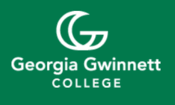 For the last several years, Georgia Gwinnett les the USG in enrollment growth.
For the last several years, Georgia Gwinnett les the USG in enrollment growth.
GGC’s current enrollment includes 5,106 freshmen, 2,496 sophomore, 1,817 juniors, 2,025 seniors and 151 transient/other. This last category includes students taking courses but not pursuing a degree.
Another 457 students are dual-enrolled at GGC and their local high schools, mostly in Gwinnett County. These students are getting a jump-start on their college careers by earning college credits while still in high school. They represent a 28 percent increase over the 358 students dually enrolled in fall 2015.
The GGC student body is 56.2 percent female and 43.8 percent male, and its average age is 22.7. About 1,742 students are of non-traditional college age, and represent students who may have delayed going to college, have returned to college or are pursuing additional degrees. Others may be taking a bit longer to complete college due to work and family obligations.
Just over 70 percent of GGC students reside in Gwinnett County, with 448 from Barrow, 712 from DeKalb, 385 from Fulton and 690 from Walton. The majority of GGC students commute, and almost 68 percent are full-time.
Walton EMC customers get 2 years of capital credits this year
When most Walton Electric Membership Corporation (EMC) customer-owners open their December bill, they’ll get something customers of other types of electric utilities don’t: a capital credit refund.
 The cooperative’s board of directors recently voted to return $6,335,000 in capital credits during 2016. Approximately 121,500 customer-owners who had accounts in 1990 and/or 2015 are included, meaning more than 95 percent of current customer-owners will get a refund.
The cooperative’s board of directors recently voted to return $6,335,000 in capital credits during 2016. Approximately 121,500 customer-owners who had accounts in 1990 and/or 2015 are included, meaning more than 95 percent of current customer-owners will get a refund.
CEO Ronnie Lee says: “Showing a profit is self-defeating in the cooperative business model. Walton EMC is owned by the same people who receive its services. That’s why we return leftover revenues.”
The individual amount returned to customer-owners is based on their electric bills or, in other words, the amount of business they did with the company.
After paying off debt and establishing a reserve for unexpected events (like a catastrophic ice storm), the board determines if it’s financially prudent to issue a refund. If so, most refunds are distributed by a credit on electric bills. This saves the cooperative and its customer-owners tens of thousands of dollars in check printing and postage costs.
Walton EMC provides electric service to 125,000 residential and business accounts in a 10-county area between Atlanta and Athens. Because its customers own the company, service — not profit — is Walton EMC’s primary focus.
Andersonville National Site invites wreath remembrances
Andersonville National Historic Site invites you to remember and honor our military veterans during the winter season by participating in our Wreaths Across America program on December 17, at 12 noon.
 Wreaths Across America is a national program that encourages individuals, community groups, and families to sponsor wreaths for placement in national cemeteries throughout the United States. These wreaths may be placed on specific graves, or left undesignated to place on one of thousands of unvisited graves. Wreaths may be purchased and sent to Andersonville National Cemetery by visiting www.wreathsacrossamerica.org. Wreaths may also be purchased from local florists or home improvement stores and placed at the cemetery throughout the month of December.
Wreaths Across America is a national program that encourages individuals, community groups, and families to sponsor wreaths for placement in national cemeteries throughout the United States. These wreaths may be placed on specific graves, or left undesignated to place on one of thousands of unvisited graves. Wreaths may be purchased and sent to Andersonville National Cemetery by visiting www.wreathsacrossamerica.org. Wreaths may also be purchased from local florists or home improvement stores and placed at the cemetery throughout the month of December.
Each year, between 500 and 800 wreaths are donated for placement at Andersonville National Cemetery. Our goal is to ensure that each of the more than 20,000 gravesites in the cemetery is decorated with a wreath at least once. To accomplish this, undesignated wreaths are placed sequentially and rotated from one cemetery section to the next each year. For 2016, undesignated wreaths will be placed in a portion of Section B, Section R, and the Memorial section.
RECOMMENDEDThe Whistler by John Grisham
 Novels by John Grisham sometimes seem like they are stamped by a formula. His latest book doesn’t seem like that, as he describes the antics when you put an Indian casino operation in a small Florida panhandle county, and then overlay that with a sinister group known as the Coastal Mafia. Throw in a corrupt local judge who hauls away satchels of money on private jet trips to domestic and international journeys, and you have all the ingredients for a good story. Then add a small state government investigative body seeking to make sure the judicial branch is honest, and from the get-go corruption seems to bloom in many facets of this book. This is one of those books which become ‘fast reads,’ keeping you turning pages. It’s a worthy addition to Grisham’s many titles, one zooming to the top of the best-seller charts. — eeb
Novels by John Grisham sometimes seem like they are stamped by a formula. His latest book doesn’t seem like that, as he describes the antics when you put an Indian casino operation in a small Florida panhandle county, and then overlay that with a sinister group known as the Coastal Mafia. Throw in a corrupt local judge who hauls away satchels of money on private jet trips to domestic and international journeys, and you have all the ingredients for a good story. Then add a small state government investigative body seeking to make sure the judicial branch is honest, and from the get-go corruption seems to bloom in many facets of this book. This is one of those books which become ‘fast reads,’ keeping you turning pages. It’s a worthy addition to Grisham’s many titles, one zooming to the top of the best-seller charts. — eeb
- An invitation: what books, restaurants, movies or web sites have you enjoyed recently? Send us your recent selection, along with a short paragraph (100 words) as to why you liked this, plus what you plan to visit or read next. –eeb
Savannah River’s banks steeped in history going back 12,000 years
(From previous edition)
Savannah River‘s banks are steeped in human history. Portions of the river flow through the sites of some of the most important archaeological digs in the United States. Some of those projects took place in the 1960s in what is now Lake Russell, before it was filled with water.
Archaeologists believe that the Paleoindians first appeared along the Savannah River near the end of the Ice Age, some 12,000 years ago. Clovis points, or stone projectiles used by Paleoindians for hunting, have been found along the Savannah. About 4,500 years ago, in the late Archaic era, crude pottery appeared near the river. Some of the oldest pottery in North America was discovered at Stallings Island, a National Historic Landmark located in the Savannah eight miles upstream from Augusta.
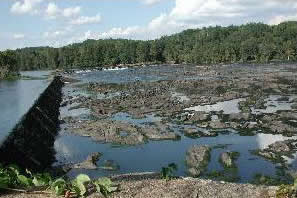 The first-known European explorer to reach the Savannah was Hernando de Soto in 1540. He and his soldiers crossed the river, probably near what is now Augusta, where the river divided and swept around an island. In the late 16th century the French started the first European commerce on the Savannah, trading with the Indians for sassafras. Sassafras may have triggered the first naval battle on the river. In 1605 the Spanish, who claimed ownership of the New World territory, came upon a group of French traders on the river and defeated them in a bloody battle.
The first-known European explorer to reach the Savannah was Hernando de Soto in 1540. He and his soldiers crossed the river, probably near what is now Augusta, where the river divided and swept around an island. In the late 16th century the French started the first European commerce on the Savannah, trading with the Indians for sassafras. Sassafras may have triggered the first naval battle on the river. In 1605 the Spanish, who claimed ownership of the New World territory, came upon a group of French traders on the river and defeated them in a bloody battle.
In the early 1700s growing tensions between the British in South Carolina and the Spanish in Florida prompted the British to establish another colony on the river to buttress the Carolina settlement. In 1733 James Edward Oglethorpe chose a 40 foot-high bluff on the Savannah, 18 miles upriver from the ocean, as the site of Georgia’s first town, Savannah. One year after Savannah’s founding, German Lutherans seeking religious freedom sailed 30 miles up the river to establish the town of Ebenezer. In 1736 Oglethorpe established Augusta; his choice of the upriver location was influenced by profitable trade with the Indians.
The Savannah settlement discovered that the marshlands around Savannah were ideal for the cultivation of a particular staple—rice. In the early years of the colony, rice plantations dotted the riverbanks and marshlands, whose waters, fed by the river and the tides, allowed for a rapid prosperity.
(To be continued)
- To view the Georgia Encyclopedia online, go to http://www.georgiaencyclopedia.org
Does this architecture tell you anything about this building?
See if you can tell where this Mystery Photo is located. You might also see if you can determine what this building was originally used for. It might not be as easy as you think. Send in your thoughts to elliott@brack.net and be sure to include your hometown.
 The last Mystery Photo was pretty much of a cream puff. Some people even told me that they didn’t submit an answer, figuring we had plenty. The photo came from Jerry Colley of Alpharetta.
The last Mystery Photo was pretty much of a cream puff. Some people even told me that they didn’t submit an answer, figuring we had plenty. The photo came from Jerry Colley of Alpharetta.
First in was Jayne Bane of Lawrenceville, saying: “Today’s mystery photo is Chimney Rock in Chimney Rock State Park in western North Carolina. My family visited there when I was a small girl as part of a trip through the Great Smoky Mountains.” Dick LoPresti of Berkeley Lake realized that “This is one of the easier ones I’ve seen. It is Chimney Rock in North Carolina!” And Tamara Betteridge of Peachtree Corners said: “The flag is on top of Chimney Rock in Chimney Rock State Park in North Carolina. That is on North Carolina Highway 74 between Lake Lure and Bat Cave. Know it well as I grew up near there.”
Susan McBrayer of Sugar Hill also “…grew up 25 miles from there. Back in the day, it was quite famous. When my mother went off to college in the late 1940s and people asked her where she was from, she simply told them she lived near Chimney Rock because everyone knew where that was.”
Bob Foreman of Grayson writes: “That is Chimney Rock near Lake Lure, N.C. This is a privately owned attraction that has been in operation for many years. From the top of Chimney Rock you can see almost the entirety of Lake Lure. The last time we were there the elevator was not working. We would not have used it. The climb to the top is all stairs and is not a difficult climb. Lake Lure is only a three hour drive from Atlanta.”
Other spotting this mystery included Jimmy Simpson, Lilburn; John Moore, Duluth; Gary Cobb, Hartwell; Hill Jordan, Sautee; Ann Odum, Duluth; Dottie Kuhn, Lawrenceville; Linda Seaman, Lilburn; and Aidan Brack, Buford; and Rob Keith, Peachtree Corners;
And of course, we got the right answer from George Graf of Palmyra, Va., who added: “The 26-story Chimney Rock elevator opens into the Sky Lounge Gift Shop and Deli, and a boardwalk from the Sky Lounge covers the final 44 steps to the top of the “Rock,” which gives a sweeping, 75-mile view of the Hickory Nut Gorge, including Lake Lure. The elevator originally opened in 1949 as the tallest in North Carolina. It took eight tons of dynamite to blast the 258-foot-high shaft and 198-foot-long tunnel through solid granite. An alternative to the elevator is the 491 steps on the Outcroppings Trail to the top of Chimney Rock.”
By the way, on the Internet, the current Chimney Rock web site adds: “The elevator is out, but where else can you get a new view with every step?” Are you up for 491?
LAGNIAPPEWalton EMC line technicians place in Lineman’s Rodeo in Kansas
Several apprentice and journeyman line technicians from Walton Electric Membership Corporation (EMC) recently competed and placed at the International Lineman’s Rodeo at Bonner Springs, Kansas. The journeyman team placed third in the EMC division and went on to finish 12th overall out of 206 teams. The team members are, second from left, Bradley McCallister, Ryan West and Preston Roberts readying equipment for the competition, while getting instructions from a judge of the event. The rodeo tests line technicians’ knowledge and skill in building and maintaining electrical distribution systems. Practicing for and competing in the event translates into more efficient and safer work habits that save time, money and lives.
CALENDAR Candlelight Tours of Yule Decorated McDaniel Farm Park, starting Thursday, Dec. 1, at 8:30 p.m. Tours will also be offered on December 2, 8, 10, 16, 17, 18, 20 and 21. See the warmth of candles and the home decorated with fresh greenery and period holiday ornaments as costumed guides share historic customs and traditions with a glimpse of everyday life on a family farm. After the tour, guests will enjoy a delicious cup of hot chocolate or apple cider as well as have the opportunity to make a holiday craft. A program fee for the candlelight tour is $8 per person. Pre-registration is required and must be done online at www.gwinnettEHC.org. McDaniel Farm is located at 3251 McDaniel Road, Duluth,
Candlelight Tours of Yule Decorated McDaniel Farm Park, starting Thursday, Dec. 1, at 8:30 p.m. Tours will also be offered on December 2, 8, 10, 16, 17, 18, 20 and 21. See the warmth of candles and the home decorated with fresh greenery and period holiday ornaments as costumed guides share historic customs and traditions with a glimpse of everyday life on a family farm. After the tour, guests will enjoy a delicious cup of hot chocolate or apple cider as well as have the opportunity to make a holiday craft. A program fee for the candlelight tour is $8 per person. Pre-registration is required and must be done online at www.gwinnettEHC.org. McDaniel Farm is located at 3251 McDaniel Road, Duluth,
(NEW) Grand Opening of model railroad train layout at George Pearce Park in Suwanee, December 3 from 2-4 p.m. See multiple modern trains in operation. Two trains will be running on two different levels (and there is a third level with a castle) through January 3 whenever the community center is open. For more details, call 678-277-0910.
Grand Opening of the Fire Station No. 1 Museum in Norcross will be Saturday, December 3 at 10:30 a.m. The Fire Station Museum in Norcross has recently undergone a facelift that gives a more museum-like experience to its visitors. The museum’s centerpiece, a 1942 Fire Engine converted Jeep. which was restored by the committee members of the DeLeon Foundation, has continued to draw an interested audience.
OUR TEAMGwinnettForum is provided to you at no charge every Tuesday and Friday.
Meet our team
- Editor and publisher: Elliott Brack, 770-840-1003
- Managing editor: Betsy Brack
- Roving photographer: Frank Sharp
- Contributing columnist: Debra Houston
- Contributing columnist: George Wilson
More
- Location: We are located in Suite 225, 40 Technology Park, Norcross, Ga. 30092.
- Work with us: If you would like to serve as an underwriter, click here to learn more.
Subscriptions to GwinnettForum are free.
- Unsubscribe. We hope you’ll keep receiving the great news and information from GwinnettForum, but if you need to unsubscribe, go to this page and unsubscribe in the appropriate box.
© 2016, Gwinnett Forum.com. Gwinnett Forum is an online community commentary for exploring pragmatic and sensible social, political and economic approaches to improve life in Gwinnett County, Ga. USA.


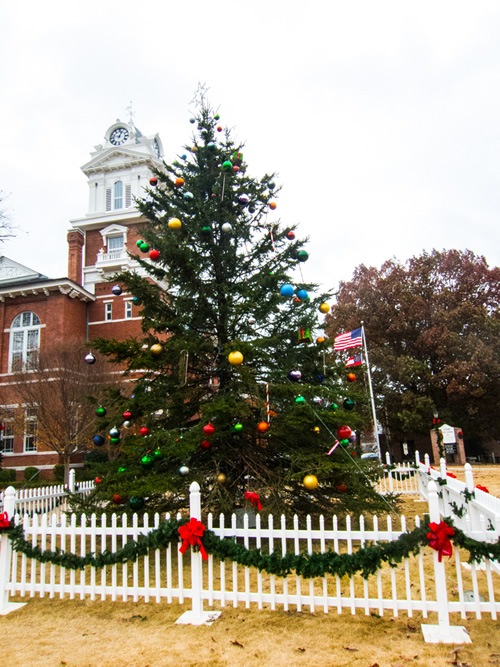

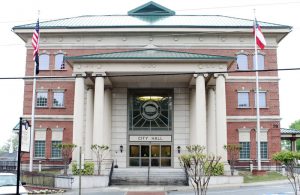
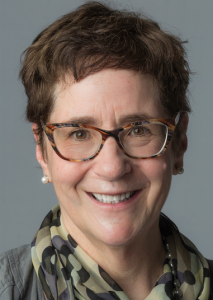
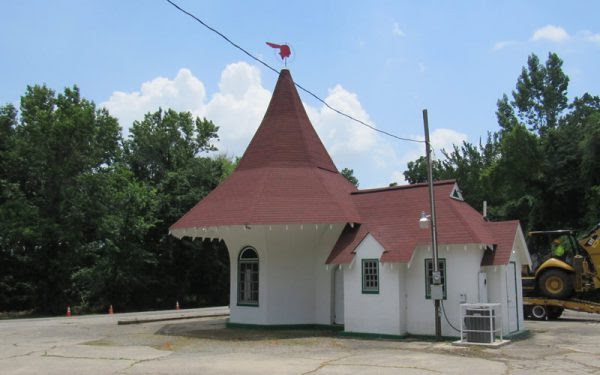
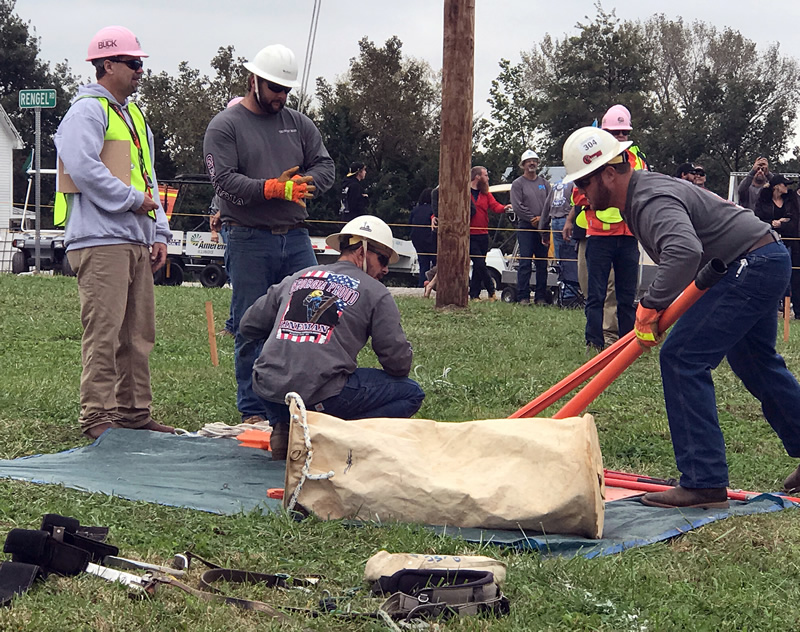








Follow Us